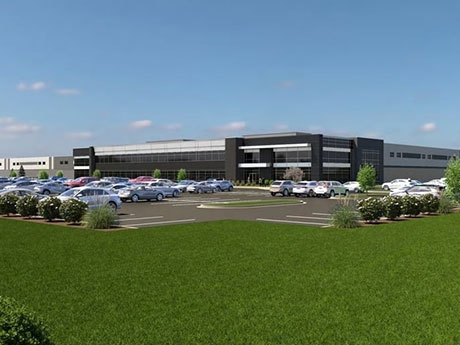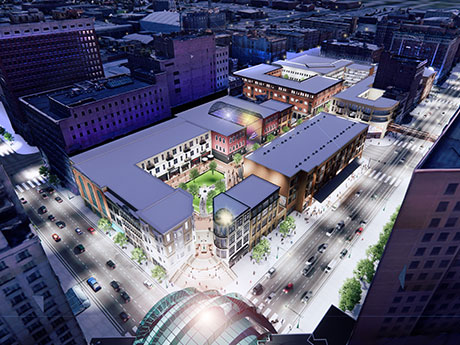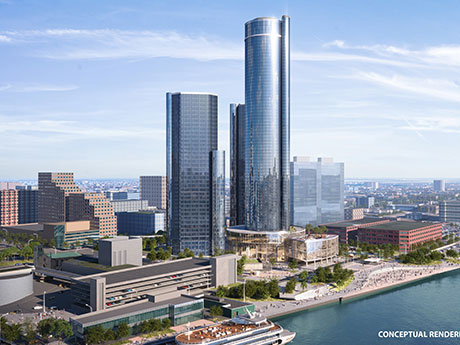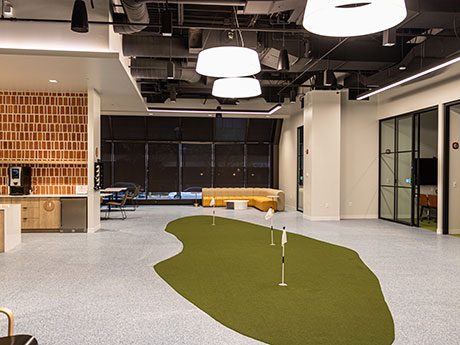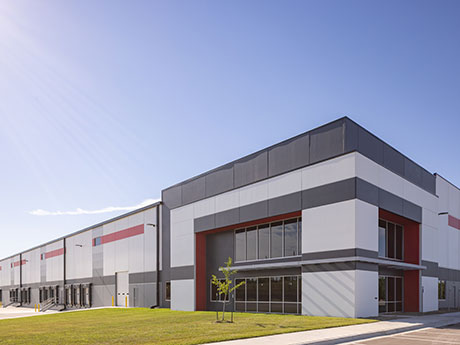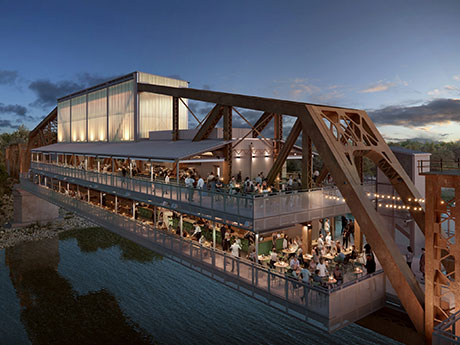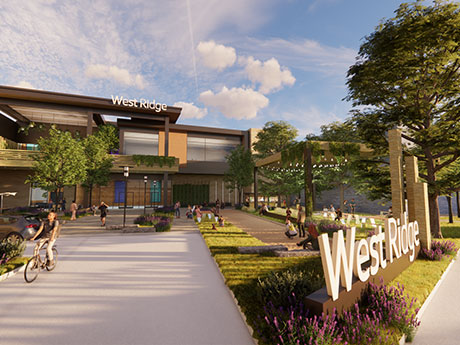By Chris Bruzas, Berkadia After a particularly challenging and unpredictable 2024, marked by continued interest rate volatility and a persistent bid-ask spread differential that contributed to low transaction volume, the Indianapolis apartment market is showing promising signs of stabilization as we move into 2025. Yardi Matrix data highlights Indianapolis’ resilience, posting 2.7 percent year-over-year rent growth in November. This performance is especially noteworthy as it surpasses several popular Sun Belt markets, which have experienced declines, dipping into negative territory. The outlook for 2025 appears more balanced, with new supply moderating to approximately 3,500 units from 2024’s record-breaking 6,500+ deliveries. This timing aligns well with the market’s strong population growth, as Indianapolis expects to welcome 22,200 new residents in 2025, significantly exceeding the historical average of 12,800 annual net movers. Key factors of the population’s growth are due to the presence of reputable universities and colleges, such as Indiana University-Purdue University Indianapolis (IUPUI). Compared with other major metropolitan areas, Indianapolis offers a relatively low cost of living, making it an attractive destination for those looking to maximize their quality of life without the high expenses associated with larger cities. The region’s economic fundamentals remain strong, anchored by transformative projects including Eli …
Midwest Market Reports
By Jason Capitani, L. Mason Capitani/CORFAC International The automotive industry and business as a whole have always operated in cycles. Looking back at 2009, when Southeast Michigan faced significant challenges, the region’s recovery in the years that followed shows how resilient the local economy can be. Yet, as we navigate today’s post-COVID landscape, some still hope for a more gradual and stable recovery. Though questions remain about whether Detroit should have seen a market correction years ago, or if electric vehicle programs have artificially propped up the economy, only time will tell. Michigan’s jobless rate hovers around 4 percent, lower than the national average of over 7 percent, marking the lowest level since before the pandemic. The state has added over 450,000 jobs since 2020. While the automotive sector remains dominant, other thriving industries include advanced manufacturing, defense, IT, medical devices, food processing and logistics. 2025 outlook: early weakness with potential for shift Demand for industrial space in late 2024 and early 2025 has been weaker, with net absorption at its lowest since 2021. This dip might signal a shift in the auto industry, with some speculating a return to hybrid or combustion engine production, though these decisions take time …
By Lance Evinger III, Hendricks Commercial Properties In an era where consumers seek more than just products, experience-driven spaces are reshaping the commercial real estate landscape. In Indianapolis, developers and urban planners are increasingly focused on transforming some of the city’s most underutilized yet high-potential areas into dynamic destinations that foster engagement, connection and excitement. Indianapolis boasts a diverse and rapidly evolving commercial real estate market that continues to attract significant investment and development. Key sectors — including office, industrial, retail and mixed-use developments — have experienced steady growth, with a strong focus on adaptive reuse projects and innovative design concepts. The city’s strategic central location, robust infrastructure and thriving convention scene make it a prime destination for businesses and developers alike. Named USA Today’s No. 1 Convention City in the U.S. in 2024, downtown Indianapolis attracts over 10 million visitors annually, a number that continues to grow. In the past year, downtown hotels have set all-time monthly revenue records, fueled by major events like the NFL Combine and NBA All-Star Weekend. At the same time, the Indiana Convention Center has seen a 14.5 percent year-over-year increase in visitors, further cementing the city’s reputation as a top-tier event destination. With …
Developers identify industrial hot spots as areas with low vacancy rates that justify speculative construction. These centrally located sites offer convenient highway access and proximity to a wide labor pool. In the Midwest, examples of industrial development hot spots where demand has remained strong include Chicago, Minneapolis, Columbus and Louisville, according to Steve Schnur, chief operating officer with Chicago-based CRG. He cites these markets because of their affordability, business-friendly environment and robust logistics infrastructure. These areas tend to keep a healthy supply-demand balance, he adds. Luckily for those whose livelihood is tied to the industrial property type, 2025 is expected to bring a return to pre-pandemic demand drivers, according to CBRE’s “U.S. Real Estate Market Outlook 2025.” The brokerage firm states that industrial occupiers will focus on longer-term strategies to improve warehouse efficiency, ensure supply chain resiliency and meet the needs of an evolving consumer base. At the beginning of this year, CRG inked a lease with States Manufacturing for 503,440 square feet at The Cubes at French Lake in metro Minneapolis. The 1 million-square-foot facility, completed in 2024, marked the largest speculative industrial project ever developed in the state, according to the developer. On the other end of the …
By Andy Gutman, Farbman Group Detroit’s office market, like many other large cities across the Midwest, has experienced many shifts — specifically in the office sector. Despite the challenges Detroit has seen over the past few years, the city has also shown great resilience. As companies continue to reconsider and revise their office needs, and workspaces evolve, Detroit is well positioned to capitalize on office occupancy in 2025 thanks to its historical assets, as well as opportunities in the city that are ripe for redevelopment. Tech, transportation and tenacity One of the city’s strengths in the office sector is its potential to rebound faster than many other Midwest cities. Unlike other markets that are overbuilt with more pain coming in the form of downsizing, such as Chicago, Detroit has avoided oversupply and isn’t overburdened with soaring vacancy rates. The city’s office market vacancy rate has slowly declined over the last several quarters — a positive sign for the local market. Detroit has also benefitted from steady and incremental growth, particularly by incubation, innovation and technology-focused tenants. It’s these types of tenants who have assisted in revitalizing the city’s urban core. The market is also characterized by a higher proportion of …
By Brian Lyss and Joshua Allen, CBRE St. Louis is typical of Midwest markets in that most of its office product continues to age. In fact, 73 percent of existing office supply in St. Louis was constructed before the 1990s. In a post-pandemic environment, users are seeking out amenity-rich prime space. Out of 53 million square feet of office product in St. Louis, 2.6 million square feet is considered “prime” in nature. Prime assets are the newest assets in St. Louis, located in walkable urban areas with an abundance of amenities. In early 2021, during the early stages of the pandemic, prime office availability (21.7 percent) was on par with non-prime (20.5 percent) as the market became increasingly concerned about the future of office use. Over the past 36 months, this surplus of available office has quickly turned into a shortage of prime assets. There has been virtually no new office construction in St. Louis, hitting the lowest levels on record. This fact guarantees that prime office space will remain tight until we see new construction begin to come out of the ground. Even if new construction does commence, the construction and lending environment is such that rates are anticipated …
By Mike Stromberg, Opus Kansas City made the list of emerging industrial markets back in 2016, and over the last nine years has more than proven itself to be a viable, profitable and competitive environment for development. Many rightly attribute the market’s continued growth to its central location within the U.S. as well as its transportation infrastructure, which includes the city’s location on the largest navigable inland waterway, at the cross-section of three interstate highways and in the middle of cross-country rail corridors running from Canada to Mexico and from coast to coast. These are unquestionably appealing features for businesses that want and need to quickly distribute products and access customers. Other qualities often lauded include a strong skilled labor pool with an estimated 2.4 million people — nearly 23 percent between the ages of 18 to 34 — living within a 50-mile radius of the city; a cost of living up to 14 percent lower than the national average; a historically low unemployment rate; and increasing wages above the national average. What really puts Kansas City on the map for developers, though, is how the state of Missouri has created a pro-business environment that leverages and advances these strengths. …
By Garrett Cohoon, Block & Co. Inc. Realtors The commercial real estate activity in the Kansas City metropolitan area showed substantial growth in 2024 for the retail, multifamily and industrial sectors. The office sector is still seeing record vacancy rates, but the annual loss over 2023 is slowing down. According to CoStar, the office vacancy rate for 2024 is up 11.8 percent in Kansas City while the national index is at a 13.9 percent increase. That’s only 0.5 percent higher than last year in Kansas City and we expect to see that trend turn around in the next year. The retail sector saw new brands like Aritzia grow into the Kansas City market. Whataburger opened its 14th location in the past two years as drive-thru restaurants have continued to be a preference for consumers and investors alike. Wellness-based businesses and health clinics have also made good strides in the market. Kansas City has seen an increase in new experiential attractions this year, including national businesses like Puttery minigolf, Andretti indoor karting and SandBox VR. These new attractions have been key to many new development complexes and redevelopments of existing strip centers. Mattel also announced a new adventure park to be …
By Cody Foster, Advisors Excel Topeka, the capital city of Kansas, has a population of approximately 125,000 people, located in a 12-county region with over 531,000 residents. The region’s population has grown over the past five years and is expected to increase by another 2.1 percent between 2023 and 2028. With an unemployment rate of around 3.5 percent as of mid-2024, the city’s economic outlook remains stable, providing a solid foundation for redeveloping key commercial properties — including the West Ridge Mall, the third-largest indoor shopping center in Kansas at 992,000 square feet. Since it opened in 1988, the West Ridge Mall has been a significant part of the city’s commercial landscape. The site features ample parking and anchors the Wanamaker Road commercial corridor, the region’s most significant retail hub, which garnered $1 billion in retail, grocery and dining spending during the past 12 months. However, like many malls nationwide, it faces challenges in a rapidly evolving retail environment. Retail trends: following consumer behavior The West Ridge Mall has seen a steady decline in business and occupancy over the last decade. Anchor stores Macy’s and Sears closed in 2012 and 2018, respectively. Various management companies tried to keep the retail …
By Russ Sagmoen, Isaac Berg and James McKenna, Colliers The greater Milwaukee retail landscape continues to thrive, with notable activity in regions such as Oconomowoc, Grafton, Franklin, Oak Creek and the Racine metro area. Franklin and Oak Creek have experienced steady growth over the past decade and are well-positioned to maintain this momentum. Meanwhile, Racine County has seen a surge of recent activity, largely fueled by Microsoft’s announcement of a $3.3 billion state-of-the-art data center in Mount Pleasant. The Racine/Kenosha I-94 corridor serves as a vital connector between the Milwaukee and Chicago MSAs, enhancing its attractiveness for economic expansion. Market-wide, we are seeing a great amount of activity from local and regional retailers/franchisees and a slowdown from national brands. While there is some activity from national retailers, they tend to be selective about their site choices, highlighting the importance of prime locations and price sensitivity. Because of this, the majority of retail activity is driven by local and regional enterprises. New retail product is scarce, with a lack of new construction due to rising interest rates and increasing land and construction costs. This has resulted in a decline in multi-tenant strip centers, with the bulk of new construction coming in …


